Whether you are just starting your entrepreneurial adventure or you already are a seasoned business owner, you need to keep present that providing your customers with an outstanding experience directly impacts your revenue. While it is true that ensuring a consistent relationship with your customers involves many variables (e.g. who your customers are, how they behave, how they communicate with you, your staff’s expertise and motivation, etc.), it is also true that a successful CRM strategy will allow you not only to optimize the communication with your customers – thus increasing customer retention and satisfaction – but also to foresee their needs and lead successful marketing campaigns.
What is CRM maturity?
Let’s take CRM letter by letter and see what hides behind each one of them:
Customer – it goes without saying that the customer database is a business’ backbone. The success of your business highly depends on how you handle your customer database.
Relationship – you have your customer database, you know their needs, and you have the products they are looking for. But that is not enough. For your business to succeed, you need to efficiently link these variables. A consistent relationship with your customers translates into enhanced customer loyalty, new leads, and, consequently, higher revenues.
Management – streamlining the communication with both your loyal and prospective clients depends on your ability to organize, centralize, and access customer data. Especially when your business grows and data gets more and more difficult to handle.
The interdependence between these 3 letters is more than obvious. But what do companies look for when implementing a CRM solution? According to FinancesOnline, managing contacts, tracking interactions, and scheduling are the key features businesses look for in CRM software.
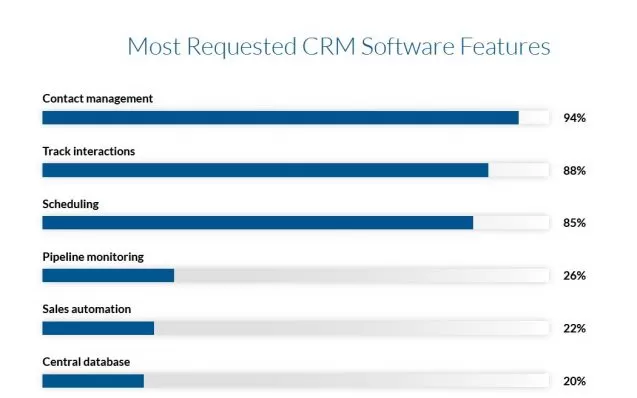
According to the same source, businesses that use CRM systems have registered a 65% increased sales quota. That’s where money is!
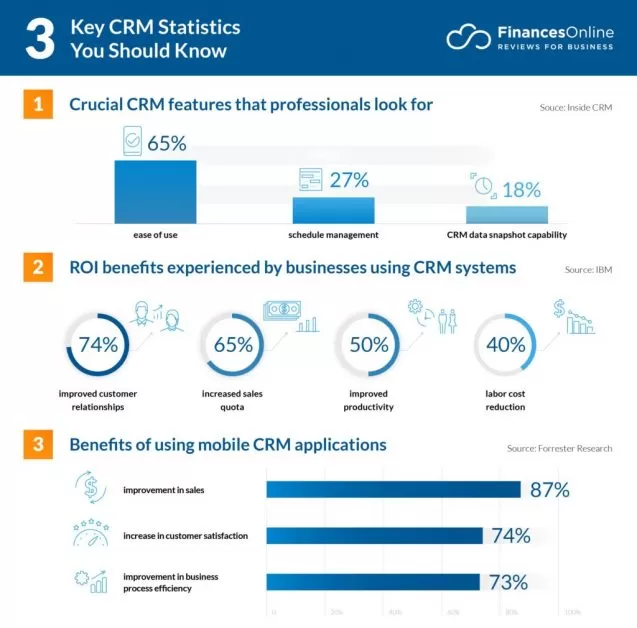
Even if statistics show that implementing CRM solutions has turned into a common practice among businesses, it doesn’t imply automatic success. Before implementing a CRM solution, there are several aspects a business needs to carefully evaluate: define needs and objectives, assess the maturity of the internal processes, assess data quality, evaluate options, etc. Most times, CRM is seen as a magic solution that will miraculously solve all the challenges posed by the new business model in the Internet Age. Implementing CRM is nothing but the starting point of a long and challenging journey that requires continuous assessment and optimization.
According to Veon Consulting, CRM maturity measures a business’ ability to use effectively all the basic and advanced concepts CRM systems provide. They distinguish 3 different stages:
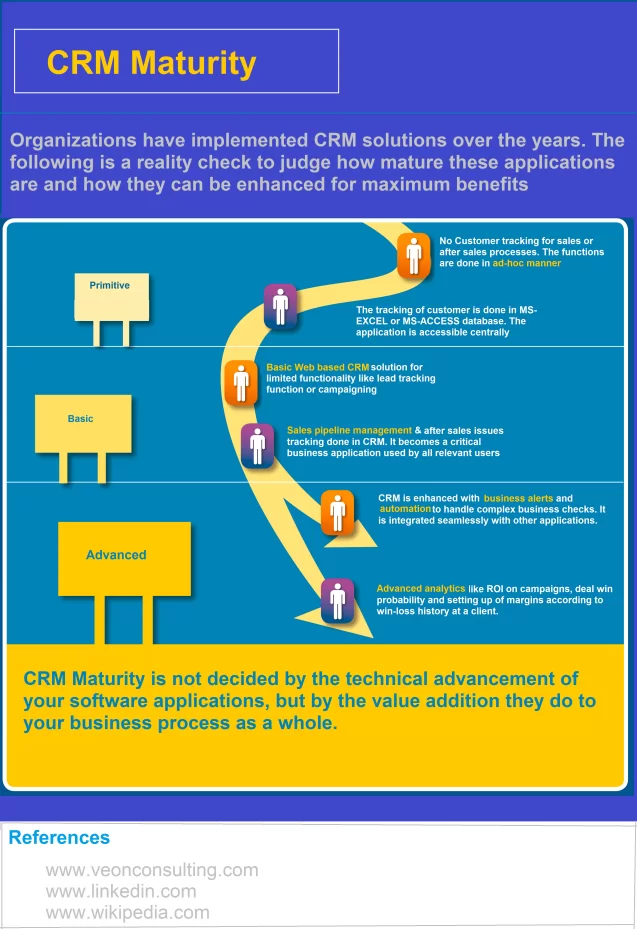
How can you estimate the CRM maturity level of your business?
XRM Vision defines the CRM maturity model as a series of structured stages that reflect the degree to which a company’s processes, practices, and behaviour can not only produce but also repeat targeted results and actions no matter who the task is assigned to.
Their Capability maturity matrix consists of 5 main stages:
- The chaotic stage
Without a reliable method in place, the process is poorly documented, unpredictable, and practically depends on the persons who operate it, making it difficult to repeat.
Your business is at this stage if you need to ask for clarifications from the person who operates it in order to understand a process.
- Managed
This is the stage where the process stops depending on specific individuals, can be repeated, is predictable, and produces consistent results. However, the process is still poorly documented.
Your business has reached this stage if the process – even if it is not documented – can be similarly performed by various persons.
- Defined
At this point, the process doesn’t depend on individuals and its execution is now standardized.
Your business has reached this stage if the process is documented, its efficiency is presumably unsupported by data, and the documentation doesn’t evolve much over time.
- Measured
This stage consists of gathering and analysing performance data to ensure stability and improve procedures.
Your business has reached this stage if performance reports get generated regularly, allowing you to improve processes based on the received recommendations.
- Optimizing
Based on feedback, processes undergo constant monitoring and optimization, thus increasing efficiency. At this stage, some processes might be automated.
Your business has reached this stage if you fully control the process tasks and the optimization decisions you make are supported by data.
Collier Pickard proposes another CRM Maturity model that consists of 4 different levels:
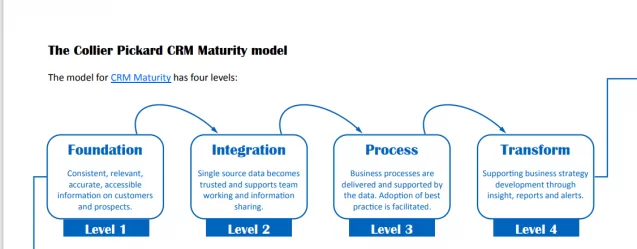
In order to help businesses improve their capabilities and enhance marketing success, Demand Metric has designed a 4-stage CRM Program Maturity Model:
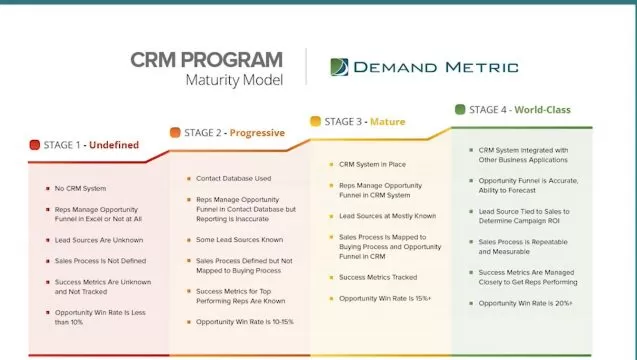
The above maturity models are simple and reliable self-evaluation tools. Obviously, if you have what it takes (i.e. expertise, time, resources, etc.) you can keep CRM maturity level assessment in the house and save costs. However, outsourcing is a safer bet than you think. Customer Think hits the nail on the head:
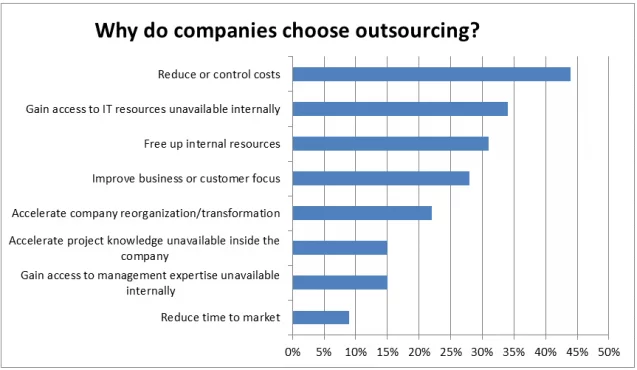
How to increase the CRM’s maturity level?
We have already agreed that guaranteeing customer satisfaction is a synonym of increased revenue and should be an inter-departmental goal. In order to take your CRM system to a whole new level of performance, it is important for all the parties involved in this process to fully understand your CRM strategy, goals, and their direct implications for business success. Here are some tips on how to improve your CRM:
- In order for the CRM ecosystem to function properly, the quality of service across all the departments needs to be equally consistent. And there is only one way to achieve this: set customer-centred common goals. You will need to make sure that your employees not only adapt to change but also take on effective roles within the CRM ecosystem.
- CRM systems are useless if the end-users don’t understand their benefits or don’t know how to use them. Customizing your CRM keeping ALL end-users in mind and provide consistent training will help your employees use the system effectively.
- The feedback you receive from customers and employees regarding the effectiveness of your CRM strategy should serve as a basis for future development and improvement. Analyse, update, and improve.
- The effectiveness of a CRM depends on the data it receives. To make the most of your CRM, you must make sure to integrate all the communication channels. That includes phone calls, e-mails, social media, or chats.
In case you have any doubts regarding the importance of the game-changer ‘customer satisfaction’ concept, a survey conducted by Salesforce on 15,600 consumers offers some relevant stats:
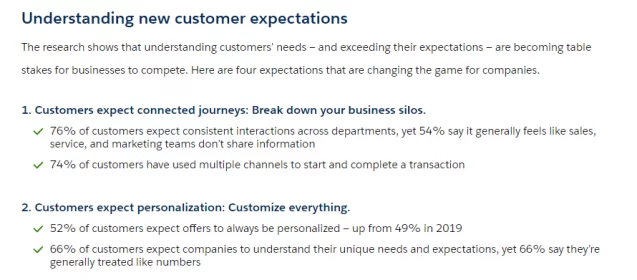
91% of the responders highlighted that a positive experience motivates them to repeat a purchase, while 71% admit that they have made purchase decisions following experience quality. The new consumer has raised the bar and expects to receive proactive service, personalized experiences, and – last but not least – connected experiences across multiple digital channels.
Wrap up
There is no wonder that, back in 2014, Gartner acknowledged Customer Satisfaction as the new battlefield for business success. It becomes more and more obvious that customer loyalty is no longer conditioned solely by products and prices. The experience customers receive while interacting with a business has become a game-changer. Implementing CRM is only the starting point of a complex and challenging journey. The final destination is maximum effectiveness and impact. And this is a goal that can only be reached when your CRM system reaches the highest level of maturity.










